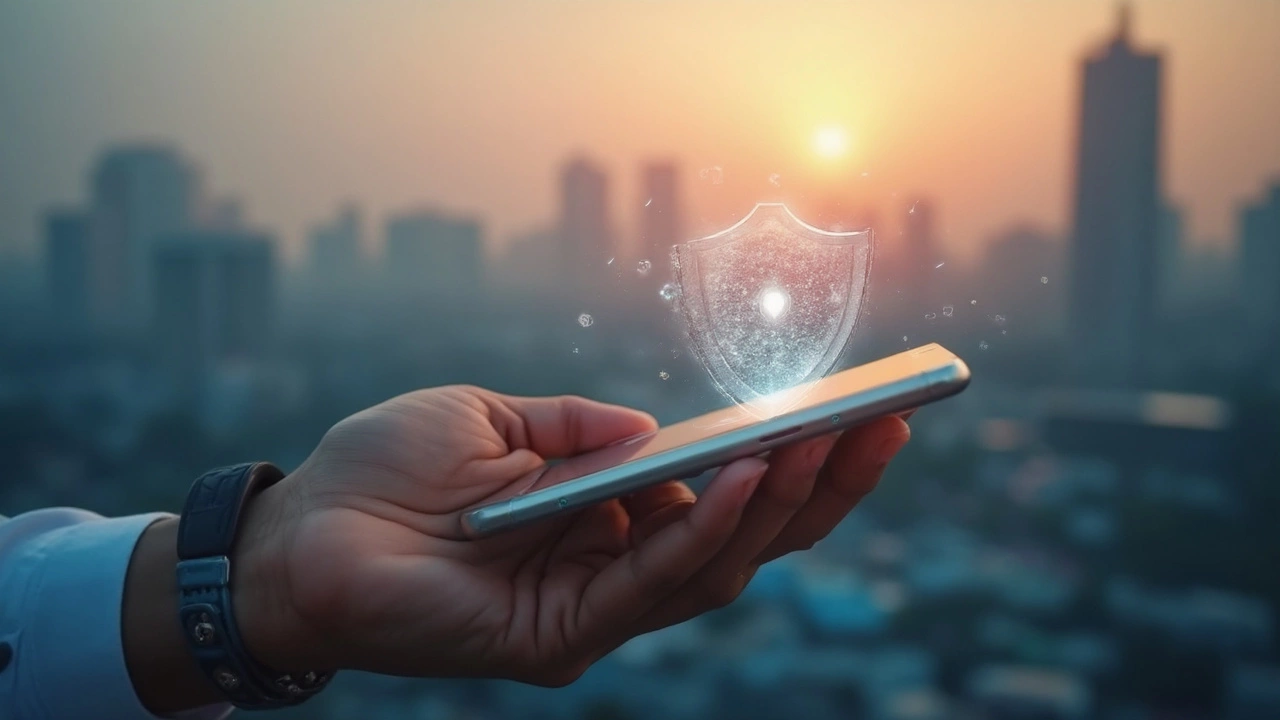15 Hidden Settings to Improve Smartphone Privacy

Imagine your smartphone as a treasure chest containing not just your social connections, but your browsing history, location data, and those late-night shopping habits. It's a goldmine of personal information, and if left unguarded, it might as well have a neon sign inviting threats. While most of us rely on basic security measures, there are hidden gems within your device’s settings that can turn your phone into a privacy fortress.
Let’s start with app permissions—those pesky pop-ups asking for your consent. Every time you download a new app, you’re essentially posting an 'Open House' sign on your data. But here's a simple fix: dive into each app’s settings and declutter unnecessary access like microphone or camera privileges unless crucial. The fewer entry points, the better.
- Understanding the Privacy Problem
- The Importance of App Permissions
- Location Services Tweaks
- Strengthening Password Security
- Advanced Privacy Features
Understanding the Privacy Problem
Picture your smartphone as your best friend who's also a tad nosy—always listening, always watching. Sounds unsettling, right? But that’s what we’re looking at if we don't take control of our privacy settings. Every app you download, every location you allow access to, is like handing out spare keys to your house without considering who might sneak in.
Let’s zoom in on one glaring issue: apps. Whether it’s that fancy photo editor or your beloved food delivery app, they often collect more data than necessary. A 2023 report by the App Defense Alliance found that around 75% of apps request permissions that aren’t essential for their functionality. That's like inviting a plumber to fix a leak and ending up with your entire house remodeled without asking.
Why Does This Matter?
Your data is valuable, not just to you but to advertisers, hackers, and sometimes governments, looking to piece together your complete profile. Targeted ads, tailored content, and even the sneaky little messages from unknown sources—they’re all scouting your details. In the worst cases, data breaches can lead to identity theft. So what's the plan?
Proactive Privacy Protection Steps
- Audit App Permissions: Go to your phone’s settings, check app permissions and strip away unnecessary access. Does a flashlight app need your location? Probably not.
- Disable Unnecessary Data Collection: Look for privacy settings in individual apps. If there’s a toggle to limit data collection, use it.
- Regular Updates: Keeping your phone software updated is crucial. Regular updates come with security patches to protect against new threats.
Understanding the privacy problem is the first step. Just like locking your front door at night, configuring these security settings keeps your data safe from prying eyes. The solution is simple but requires vigilance and action.
The Importance of App Permissions
Think of app permissions as gatekeepers that decide who gets VIP access to your personal info. Each time you tap 'allow,' you're opening the door wider for these apps, and sometimes, they're nosier than a neighbor trying to peek over the fence.
Most apps need permissions to function properly, but some ask for a lot more than they should. Ever wonder why a flashlight app needs access to your contacts? It doesn't. This is where a bit of sleuthing can save you from unnecessary exposure.
Why It Matters
By default, apps might ask for permissions that mirror a greedy roommate—taking more than they’re worth. This can lead to privacy breaches, as some developers might misuse this information for data mining. The first step to protecting your smartphone privacy starts with a little discipline in granting only the essential permissions. Not every app needs to know what your favorite pizza place is.
How to Adjust App Permissions
Here’s a straightforward guide to trim app permissions:
- Open Settings: Find the 'Apps' section in your smartphone settings. It might be labeled as 'Applications' or 'App Management,' depending on your device.
- Review Permissions: Click on an app and find 'Permissions.' Here you'll see a list of what the app has access to, like location, contacts, or camera.
- Switch Off Non-Essentials: If an app has permissions for services it doesn't need, toggle those off. A social media app doesn’t need your GPS unless you’re tagging a location.
Privacy Check Tables
Here’s a quick glance at common permissions and their typical necessity:
| Permission | Essential For | Usually Unnecessary |
|---|---|---|
| Location | Maps, Ride-Sharing | Weather Apps |
| Contacts | Messaging Apps | Games |
| Camera | Video Calls | Banking Apps |
Remember, the key is to strike a balance. Restrict enough to ensure smartphone security, but allow the device to remain functional for your needs. Nothing’s more empowering than knowing you’re in the driver’s seat of your privacy.

Location Services Tweaks
Imagine your smartphone is a loyal pet, following you around everywhere. It's cute, for sure, but sometimes it's just too much and, frankly, a bit creepy. Your phone doesn't need to know you stopped at the corner shop for some midnight snacks, right? So, let's talk about smartphone privacy tweaks for location services that can help protect your every move.
Why You Should Care
Every app and service that pings your location is like a little nosey neighbor peeking over the fence. Some apps genuinely need to know where you are—like maps or ride-share apps—but others just want to gather data and show you tailored ads. In fact, a study found that up to 70% of location data collected is used for advertising.
Steps to Secure Your Location
Here’s how you can trim down who gets to know your whereabouts:
- Review App Permissions: Go to your settings, tap on 'Privacy' or 'Location Services', and review each app. Ask yourself, "Does this game really need to know my location?"
- Switch to 'While Using' Mode: For apps that need access, like your weather app, set permissions to 'While Using the App'. This way, they can only check in when you're actively using them.
- Disable Location for Photos: When you snap a photo, your phone often tags it with a location. Turn off this setting unless you’re planning to create a map later of your photo adventures.
Use Airplane Mode as an Ally
This might sound odd at first, but putting your phone in airplane mode when you're not expecting calls or notifications is like popping your phone into an invisible cloak. It disconnects your phone from tracking services until you're back online.
Global Stats on Location Tracking
| Continent | Average Location Request Per Day |
|---|---|
| North America | 46 |
| Europe | 38 |
| Asia | 52 |
Remember, it's about taking back control. By tweaking these location services settings, you’re putting yourself in the driver's seat of your own digital journey instead of just being along for the ride.
Strengthening Password Security
Think of your passwords as the lock on your front door. You wouldn’t use a flimsy lock for your house, right? The same goes for your smartphone. In a world where so much of our personal and financial life is contained in our devices, weak passwords are like leaving the key under the mat.
Create Strong Passwords
To bolster your smartphone security, start by crafting strong passwords. A solid password usually contains a mix of letters, numbers, and symbols, and is at least 12 characters long. But let’s be honest: who can remember all that? That’s where password managers swoop in, acting like a digital vault for your passwords.
- Use a password manager: These nifty tools generate and store all your complex passwords, so you only need to remember one master password.
- Enable two-factor authentication: This adds an extra layer, requiring not just a password but a second piece of information, such as a code sent to your mobile device, to access your accounts.
Regularly Update Your Passwords
Passwords aren't meant to last forever. They’re more like the milk in your fridge, bound to go sour if you don’t swap them out regularly. Aim to update your passwords every few months, especially for apps or services holding sensitive information.
Unique Passwords for Every Account
Copy-pasting the same password across different sites is like using the same key for every lock you own. Not a great idea. If a thief cracks one, they’ve cracked them all. With unique passwords for each account, you’re making it a lot harder for anyone trying to hack in.
Keep It Secure
Once you've created these fortress-like passwords, don’t be tempted to write them down on a sticky note next to your computer. That’s like locking the door and leaving the key in the keyhole. Instead, rely on your password manager to keep them secure.
Remember, in the age of digital information, strengthening your password security is non-negotiable. It's the frontline defense that keeps your personal life personal.

Advanced Privacy Features
Think of advanced privacy features as the secret passageways in a medieval castle, offering hidden routes to keep your most cherished secrets safe. If you're serious about smartphone security and stepping up your privacy game, these are the tunnels worth exploring.
Privacy Guard Apps
These apps are like having a personal bodyguard for your data. They not only shield your information but also provide audits of what’s vulnerable. You wouldn’t wait for a knight in shining armor to defend your castle; take charge and download a reputable privacy guard app.
"Privacy isn't just about hiding information; it's about revealing it selectively." — David Brin, American author
Encrypted Communications
Most of our casual chats might sound mundane, but sometimes private conversations need extra layers of security. Using apps with end-to-end encryption ensures that your messages are only readable by you and the intended recipient. Think of it as sending a message in a locked treasure chest, with only one key available—yours!
Two-Factor Authentication
Tired of feeling like your data is just a password away from being a public spectacle? Two-factor authentication acts like a moat around your castle’s gates. Here's how:
- Set Up: Go to your account settings and choose two-factor authentication.
- Use Authentication App: Download an app like Google Authenticator for creating verification codes.
- Verify and Activate: Follow the steps to activate it on your accounts.
Virtual Private Network (VPN)
When you connect to public Wi-Fi, it's like traversing a bustling marketplace with your belongings up for grabs. Using a VPN creates a secure tunnel for your online activities, shielding them from prying eyes. It's your very own cloak of invisibility while browsing!
Incorporating these smartphone privacy features might feel like a lot to handle at first, but breaking it down step by step makes it manageable. After all, when it comes to protecting your digital kingdom, even the strongest walls are built one brick at a time.
